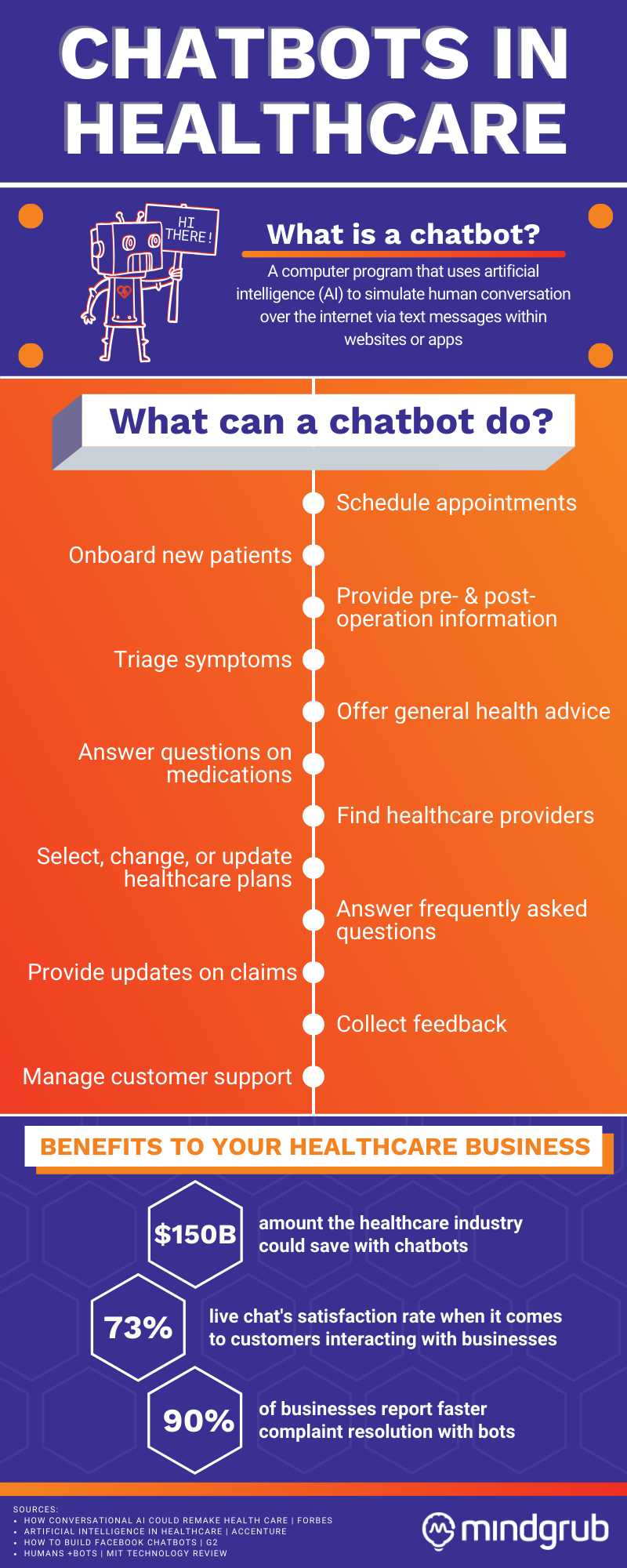Chatbots in Healthcare [Infographic]
Artificial intelligence (AI) isn’t just for the biggest, most innovative companies anymore. Companies from all industries are embracing the AI’s power to establish a competitive advantage and set the stage for future growth.
For healthcare, one such AI implementation with the potential to affect widespread change is a chatbot. Take a look at the infographic below to see the potential impact of a chatbot.

Barriers to Adoption
As with all groundbreaking technology, there are hurdles to overcome on the path to widespread chatbot acceptance. The most common obstacles include patient mistrust and security concerns.
The thought of trusting a “robot” over a specially trained physician is, for many, a hard pill to swallow. A patient who is not tech-savvy, particularly elderly patients, may not trust a prognosis coming from something they do not understand.
Consider your audience when deciding how you will implement a chatbot, and take them into consideration when deciding what purpose your bot will serve. If your practice caters to the elderly, a feature that reminds the patient to take medication may be appreciated (and used) more than one that offers pre-operation instructions or handles complex billing questions.
Once you have your desired functionality, build trust with your patients through transparency. Explain the chatbot’s purpose, how it works, and the value it provides to the patient. And, of course, offer alternative ways to access information for those who can not (or will not) use the bot.
The sensitive nature of healthcare information can lead many to distrust chatbots.
Although the chatbot experience feels different, and perhaps less secure than inputting personal information into an online form or telling the receptionist at your doctor’s office, it’s actually not much different.
That being said, given the highly-sensitive nature of health information, you’ll want to select a bot that is built to comply with HIPPA, ISO certifications, and other privacy and security regulations (like Microsoft’s Health Bot). And, again, you’ll want to be transparent with your patients or customers.
To Recap
In spite of these barriers, chatbots are certainly worth investing in, especially in the digital age. Doing so means less time spent on repetitive calls. Plus, anytime, instant access to support increases patient satisfaction.
Not to mention the $150 billion in potential savings for the healthcare industry - who wouldn’t want a piece of that?
.png?width=75&name=msprinkle%20headshot%20circle%20(1).png)
